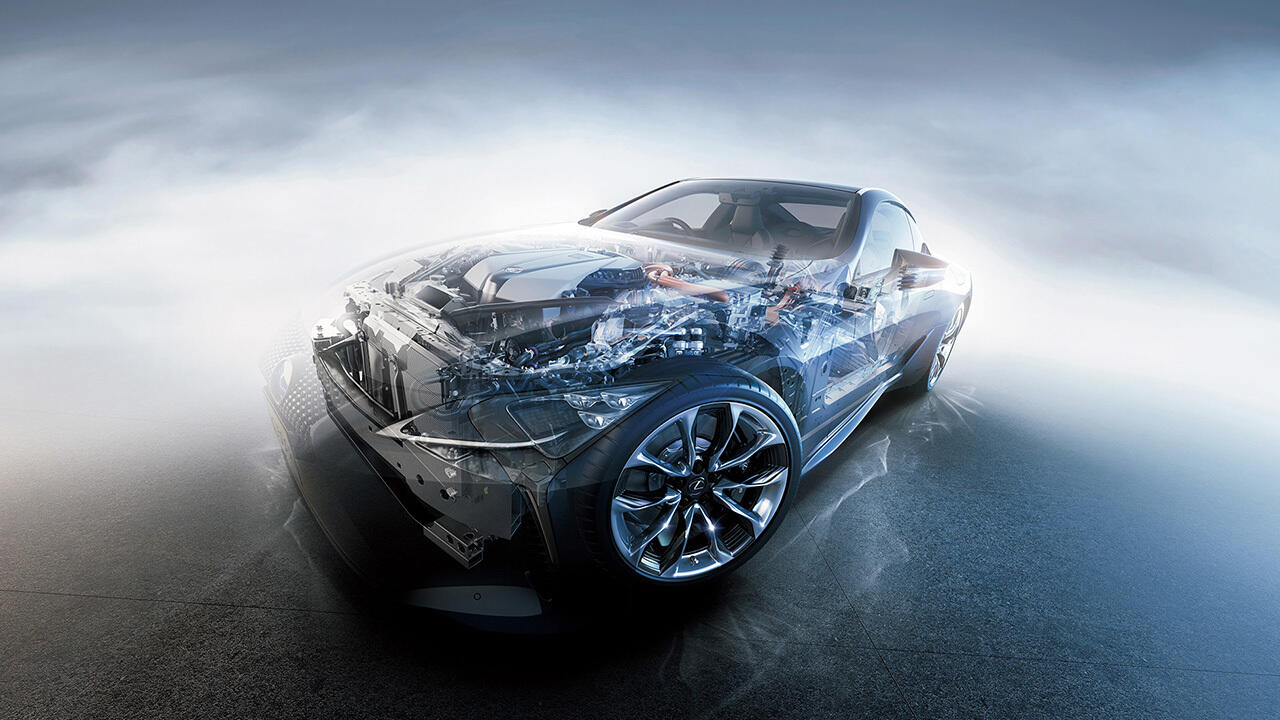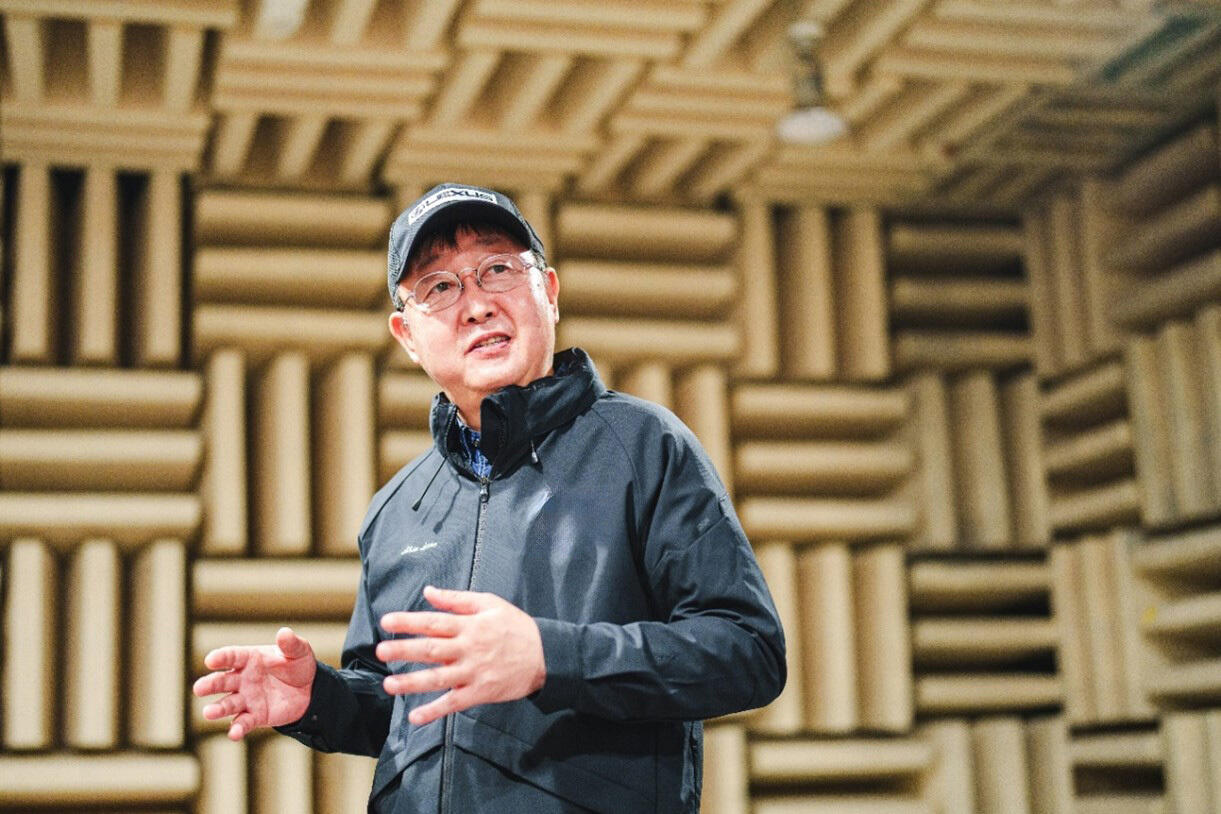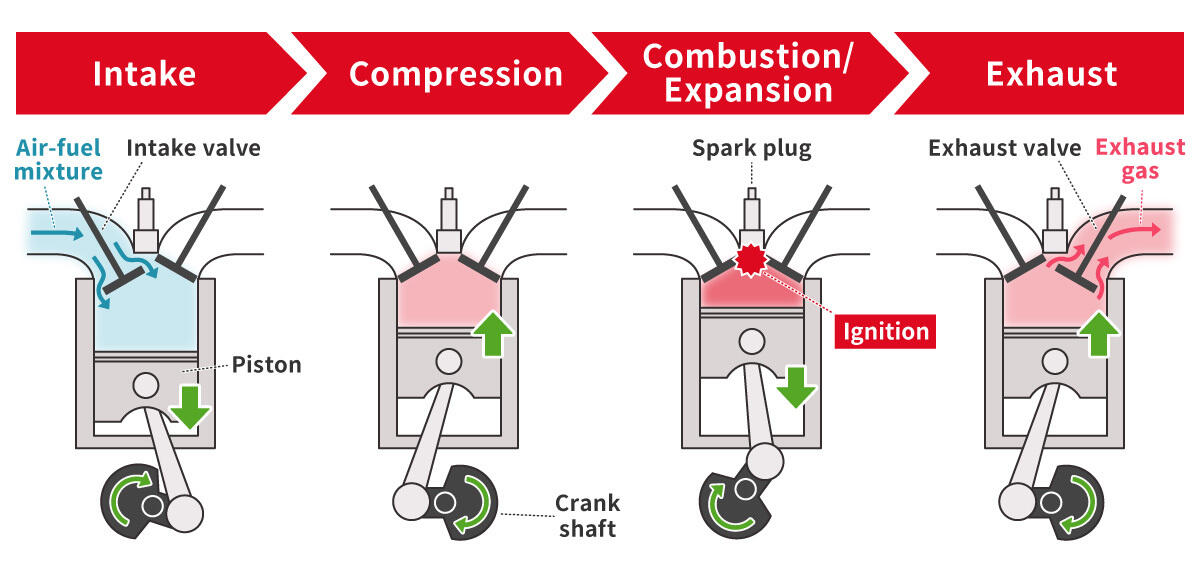
Engine sounds enchant car enthusiasts. In this article, we continue to trace how Toyota began sculpting its unique sound.
A good sound is no simple matter
During our in-depth conversations about the beautiful engine sounds of the LC and its progenitor, the LFA, Sano let slip the following insight: “The LFA’s V10 is essentially a detuned F1 machine. You’re sure to get a good sound out of that.”
Assistant Manager Sano

The fact is that if the engine is constructed to withstand high revs and high output, you will get relatively clean orders—i.e., a good sound.
To begin with, the RPM range of such high-performance machines is completely different from the engines we normally handle.
Whether it’s the LFA or the 2ZZ engine in the last Celica, you can’t hit those kinds of RPMs without increasing the stiffness of every engine component.
As a non-sports car example, take the first-generation LS’s V8 engine, which is fully balanced. This gives it a good base sound, which is then slightly cleaned up to be quieter, while also bringing out the pleasing tones.
Basically, it’s easier to create a good sound when you have a good engine. If you don’t, you need to put a huge amount of effort into noise cleaning, such that even the sounds you want to hear end up lost... though some people will not like me saying so (laughs).
As he said this, Sano gave a cheeky glance toward Project Manager Takayuki Minematsu of the Function Development Department No.3, Powertrain Function & Performance Development Division, who responded with a wry grin.
Project Manager Minematsu

If you increase power, you get more sound. If you boost fuel efficiency, you get more sound. The formula is that sound is produced whenever you pursue the things that you want in a car, so it becomes a question of suppressing these sounds, which is extremely difficult.
Nodding in emphatic agreement were Group Manager (GM) Yoshiaki Hamamoto and Assistant Manager Tomoya Kuriyama, both of Powertrain Development Department No.2 within the Lexus Performance Development Division.
GM Hamamoto

If you speed up combustion to improve efficiency, pressure buildup within the cylinders also quickens accordingly, increasing the vibration and combustion shock forces that create sound. The inverse is also true: slowing down combustion reduces noise, but also harms fuel efficiency.

Assistant Manager Kuriyama

It can be difficult for those of us who have been focused on improving fuel efficiency, but by working together on sound production I came to see that sound is also important.
How can we lessen unwanted noise without compromising fuel efficiency? I realized we need a joint effort to continue making both aspects better.
Noise vs. intentional sound
In 2015, then-President Akio Toyoda sat down for a conversation with baseball star Ichiro. When explaining the context behind the revolution that TNGA brought to Toyota’s carmaking, he began by talking about sound.
Akio Toyoda (then president)
We (Toyota) treated all sounds as noise. But that ignores the idea of tone. When you intentionally step on the gas, the “vroom” sound you hear reflects that intention, and should be treated as a separate tone.
This idea of the engine sound as something intentional is a core element of Toyota’s ever-better carmaking. It led to the creation of Active Sound Control (ASC), a device that enhances sound.
ASC accentuates the desired tones by adding electronic sounds in sync with vehicle behavior, but how do developers determine what kind of sounds should be added, and under which circumstances?
We had the process explained to us using Hardware-In-the-Loop-Simulation (HILS), an actual development simulator that quantifies engine functions and vehicle behavior, with data from an MT-spec GR Yaris.
Assistant Manager Nakayama
Onboard sound can be broken up into three broad categories: engine sounds, road noise, and wind noise. This system is a sound simulator that can add ASC sounds for each type.

Going into more detail, engine sounds can be divided into those made by the movement of air and those that come from the engine’s vibrations being transmitted through various parts. Although it is not physically possible, we can also simulate how much quieter the car’s interior would be if the engine were suspended in space.
The simulator’s ASC sounds are produced using an onboard ECU (electronic control unit), so the settings we simulate here can be transferred directly into the car.
Within the software, we have the original engine sound along with road and wind noise, which we mix and play back through headphones.
After hearing the base GR Yaris sound, we listened to just the electronic ASC additions. We were stunned at the deep, dense exhaust growl, far beyond what we imagined could be reproduced electronically.
And when layered together, the two sounds produced a gravelly idling rumble akin to fitting a straight pipe exhaust. Cranking up the revs on the software, a fierce, powerful sound reverberated out. “This would never pass a vehicle inspection,” remarked one team member with a laugh, still wearing the headphones.
Assistant Manager Nakayama
We are designing sounds that allow you to engage in dialogue with the car by using signals such as engine revs, vehicle speed, and pressure on the accelerator. As we listen, rearrange, and even change the sound source, we continue to explore different possibilities.
Even testing a single acceleration or deceleration in an actual vehicle takes a lot of time, so by trying things out in this environment first we can boost the speed of development.
For the onboard sound, whereas in the past we would install dedicated ASC speakers, now it is integrated into the audio system.
Because speakers are positioned differently in each vehicle, and the sounds they emit reach the ear differently, every model requires its own tuning. If this tuning isn’t done right, people would notice that what they thought were engine sounds are actually coming from their speakers.
Tuning the sound image into the correct position so that individual sounds emerge from appropriate places is a very delicate and important task crucial to the ASC’s effectiveness.
In sports driving, engine sounds serve not only to enhance the thrill but also as a key source of information for the driver. Another advantage of ASC is being able to turn up the volume so that these sounds can be heard even when wearing a helmet at the racetrack.
Now, let’s listen to these “intentional sounds” from the GR Yaris. Also, try comparing them to the sound of the bench-mounted G16 engine we shared in the first article of this series.

